
The Pristine Wilderness of Boundary Waters Canoe Area
Explore the Boundary Waters Canoe Area Wilderness in Minnesota, a pristine paradise for canoeing, fishing, and wildlife observation, offering over a million acres of untouched natural beauty.
Nestled in the northern stretches of Minnesota, the Boundary Waters Canoe Area Wilderness (BWCAW) offers a serene escape into nature's raw beauty. This vast wilderness, spanning over a million acres, is a mosaic of forests, lakes, rivers, and streams. It is a paradise for canoeing enthusiasts, providing over 1,200 miles of canoe routes and nearly 2,000 campsites. The BWCAW is a haven for those seeking tranquility and an intimate connection with the great outdoors. The BWCAW is not just about paddling through tranquil waters; it is also about immersing yourself in rich biodiversity. Home to a variety of wildlife including moose, black bears, and bald eagles, the area offers ample opportunities for wildlife observation. The pristine environment, free from motorized vehicles, ensures an undisturbed natural habitat, making every moment spent here a step back into an ancient and unspoiled world. Fishing enthusiasts will find the BWCAW an angler's dream, with an abundance of fish such as walleye, northern pike, and smallmouth bass. The clear, clean waters of the lakes and rivers are perfect for casting a line and enjoying the peaceful surroundings. For hikers, numerous trails crisscross the wilderness, offering breathtaking views and a chance to explore the varied terrain. Whether you're paddling, fishing, hiking, or simply soaking in the silence, the BWCAW promises an unforgettable wilderness adventure.
Local tips in Boundary Waters Canoe Area Wilderness
- Obtain the necessary permits in advance, as access to the BWCAW is regulated to preserve its pristine condition.
- Pack lightweight and waterproof gear, as portaging between lakes can be physically demanding.
- Bring a detailed map and compass; cell phone service is unreliable in the wilderness.
- Practice Leave No Trace principles to help maintain the area's natural beauty and cleanliness.
- Check the weather forecast before your trip and be prepared for sudden changes in weather conditions.
The Pristine Wilderness of Boundary Waters Canoe Area
Nestled in the northern stretches of Minnesota, the Boundary Waters Canoe Area Wilderness (BWCAW) offers a serene escape into nature's raw beauty. This vast wilderness, spanning over a million acres, is a mosaic of forests, lakes, rivers, and streams. It is a paradise for canoeing enthusiasts, providing over 1,200 miles of canoe routes and nearly 2,000 campsites. The BWCAW is a haven for those seeking tranquility and an intimate connection with the great outdoors. The BWCAW is not just about paddling through tranquil waters; it is also about immersing yourself in rich biodiversity. Home to a variety of wildlife including moose, black bears, and bald eagles, the area offers ample opportunities for wildlife observation. The pristine environment, free from motorized vehicles, ensures an undisturbed natural habitat, making every moment spent here a step back into an ancient and unspoiled world. Fishing enthusiasts will find the BWCAW an angler's dream, with an abundance of fish such as walleye, northern pike, and smallmouth bass. The clear, clean waters of the lakes and rivers are perfect for casting a line and enjoying the peaceful surroundings. For hikers, numerous trails crisscross the wilderness, offering breathtaking views and a chance to explore the varied terrain. Whether you're paddling, fishing, hiking, or simply soaking in the silence, the BWCAW promises an unforgettable wilderness adventure.
When is the best time to go to Boundary Waters Canoe Area Wilderness?
Unmissable attractions to see
Split Rock Lighthouse State Park
Explore the breathtaking Split Rock Lighthouse State Park, where nature, history, and stunning views of Lake Superior come together.

Superior National Forest
Explore the stunning landscapes and rich biodiversity of Superior National Forest, a haven for outdoor enthusiasts and nature lovers in Minnesota.

Voyageurs National Park
Discover the breathtaking lakes and rich wildlife of Voyageurs National Park, Minnesota's stunning outdoor paradise for adventure seekers.

Gunflint Lodge & Outfitters
Discover adventure and tranquility at Gunflint Lodge & Outfitters, your gateway to the breathtaking North Woods of Minnesota.

Grand Portage National Monument
Explore the rich history and stunning landscapes of Grand Portage National Monument, a unique blend of nature and culture in Minnesota.

Cliff Wold's Outfitting Co.
Discover adventure in Ely, Minnesota with Cliff Wold's Outfitting Co., your premier canoe and kayak rental service in the Boundary Waters.

Fall Lake Campground
Experience the tranquility and natural beauty of Fall Lake Campground, a perfect destination for outdoor enthusiasts visiting Ely, Minnesota.

Burntside Lake
Discover the serene beauty of Burntside Lake in Minnesota, a paradise for fishing, kayaking, and hiking enthusiasts amidst breathtaking natural landscapes.

Ellsworth Rock Gardens
Explore the serene Ellsworth Rock Gardens in Kabetogama, Minnesota, a unique blend of stunning rock formations and vibrant plant life.

Trails End Campground
Experience the tranquility of nature at Trails End Campground, your gateway to the stunning landscapes of Minnesota's Gunflint Trail.

Boundary Waters Canoe Area
Discover the stunning wilderness of Boundary Waters Canoe Area, a premier destination for hiking, canoeing, and experiencing Minnesota's natural beauty.

Gunflint Trail National Scenic Byway
Discover the breathtaking landscapes and outdoor adventures along the Gunflint Trail National Scenic Byway, Minnesota's scenic gem in the wilderness.

Highest Point in Minnesota
Experience stunning views at the highest point in Minnesota, where nature and adventure await in the breathtaking landscapes of Grand Marais.

Caribou Rock Trail Trailhead
Explore the stunning Caribou Rock Trail in Grand Marais, Minnesota, a picturesque hiking area offering breathtaking views and serene natural beauty.

Height of Land Portage
Explore the stunning landscapes and serene beauty of Height of Land Portage in Grand Marais, Minnesota, a must-visit destination for nature lovers.

Markets, malls and hidden boutiques
Lake Superior Trading Post
Explore the charm of Lake Superior Trading Post, a unique gift shop in Grand Marais offering local crafts, outdoor gear, and memorable souvenirs.
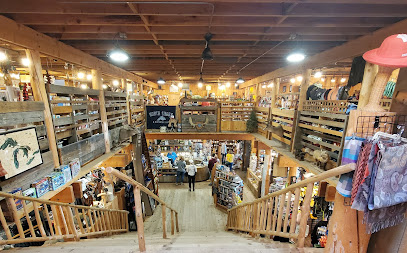
Piragis Northwoods Company
Discover the ultimate outdoor adventure destination at Piragis Northwoods Company in Ely, Minnesota, offering rentals, gear, and unique gifts for every explorer.

Voyageur North Canoe Outfitters
Discover unforgettable outdoor adventures at Voyageur North Canoe Outfitters in Ely, MN, your gateway to the Boundary Waters wilderness.

Cliff Wold's Outfitting Co.
Discover the wilderness of Ely, Minnesota, with Cliff Wold's Outfitting Co., your premier destination for canoe and kayak rentals, camping, and outdoor gear.
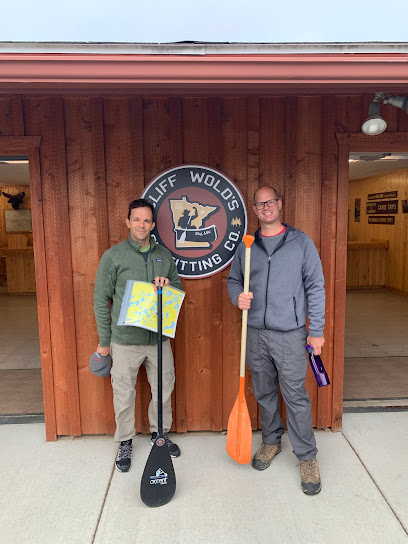
The Boundary Waters Canoe Area Wilderness
Discover the Boundary Waters Canoe Area Wilderness: A serene escape into nature's untouched beauty with endless outdoor adventures.

Voyageur Canoe Outfitters
Explore the pristine waters of Minnesota with Voyageur Canoe Outfitters, your ultimate destination for canoe and kayak adventures amidst stunning wilderness.

Spirit of the Wilderness
Discover top-notch outdoor gear at Spirit of the Wilderness in Ely, MN - your gateway to unforgettable adventures in nature.

Sawtooth Outfitters
Explore Minnesota's breathtaking outdoors with top rental gear and expert advice at Sawtooth Outfitters in Tofte.

Williams and Hall Outfitters
Discover unparalleled outdoor adventures in Ely, Minnesota at Williams and Hall Outfitters, your gateway to the Boundary Waters.

Stone Harbor Wilderness Supply
Discover top-notch outdoor gear and expert advice at Stone Harbor Wilderness Supply, your gateway to Minnesota's stunning North Shore adventures.

Northern Expressions
Discover the creamy delights of Northern Expressions, Ely's favorite ice cream shop, offering artisanal flavors in a charming atmosphere.

Seagull Outfitters & Cabins
Discover the best of Minnesota's wilderness with canoe rentals, cozy cabins, and endless outdoor adventures at Seagull Outfitters.

Ely's Old-Fashioned Candy
Discover Ely's Old-Fashioned Candy: A delightful gift shop filled with classic candies and toys, perfect for sweet souvenirs and nostalgic treats.
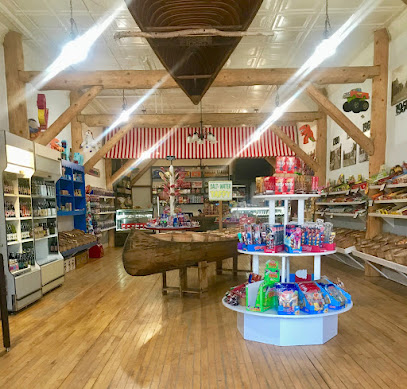
WatersEdge Trading Co
Explore WatersEdge Trading Co in Tofte, Minnesota: Your destination for unique gifts, outdoor gear, and local treasures.

Boundary Waters Outfitters
Discover the beauty of Minnesota's wilderness with Boundary Waters Outfitters, your premier canoe and kayak rental service in Ely.
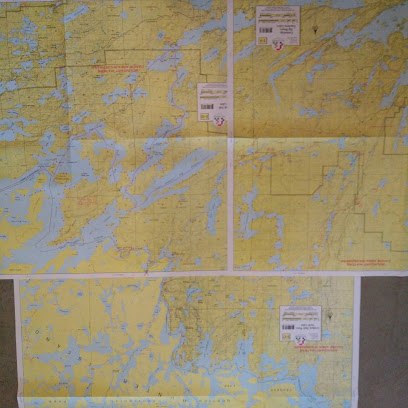
Essential bars & hidden hideouts
Grand Ely Lodge Resort & Event Center
Discover the perfect retreat at Grand Ely Lodge Resort & Event Center, offering comfort, adventure, and stunning views in Ely, Minnesota.

Insula Restaurant
Discover the flavors of Ely at Insula Restaurant, where every dish is a celebration of fresh, local ingredients and culinary creativity.

Gunflint Lodge & Outfitters
Experience the ultimate outdoor adventure at Gunflint Lodge & Outfitters, where nature meets comfort in the heart of Minnesota's wilderness.

Ely Steak House
Experience the best of Ely's culinary scene at Ely Steak House, where every steak is a masterpiece and every meal tells a story.

Willy's on the Water
Experience the best of American cuisine with stunning waterfront views at Willy's on the Water in Big Lake, Minnesota.

Prohibition Bar
Experience the elegance of Prohibition Bar, a high-end speakeasy in Minneapolis with breathtaking views and exquisite cocktails.

Britton's Café Inc.
Experience the best breakfast in Ely, Minnesota, at Britton's Café Inc., where local flavors meet cozy charm every morning.

Cascade Lodge Lutsen MN
Discover Cascade Lodge in Lutsen, MN – a perfect blend of comfort, adventure, and exquisite dining on the stunning North Shore.

Gator's Grilled Cheese Emporium
Discover a cheesy paradise at Gator's Grilled Cheese Emporium in Ely, MN, where gourmet sandwiches meet warm hospitality.
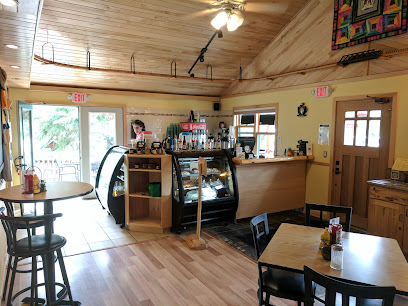
Trail Center At Poplar Lake
Discover the charm of Trail Center at Poplar Lake, where hearty meals and outdoor adventures await amidst Minnesota's stunning wilderness.
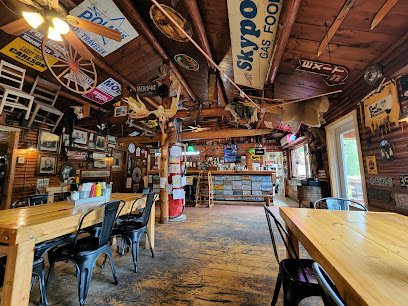
Hungry Jack Lodge & Campground
Experience the perfect balance of adventure and relaxation at Hungry Jack Lodge & Campground in Grand Marais, Minnesota.

Stony Ridge Resort & Cafe
Discover the perfect blend of comfort and adventure at Stony Ridge Resort & Cafe in Ely, Minnesota, where nature meets hospitality.

Dueling Brews
Discover the perfect blend of coffee and community at Dueling Brews in Becker, Minnesota – your go-to spot for delicious brews and bites!

Sal's Bar & Grill
Discover Sal's Bar & Grill in St. Joseph, MN, where delicious grilled dishes and a vibrant atmosphere await every visitor.

Subway
Discover fresh, delicious sandwiches at Subway in Ely, Minnesota — the perfect stop for quick bites while exploring the beauty of the North.
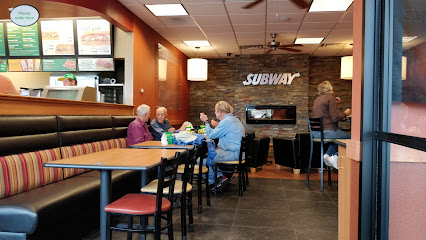
Local Phrases about Boundary Waters Canoe Area Wilderness
-
- HelloBoozhoo
[boo-zhoo] - GoodbyeMiigwech
[mee-gwetch] - YesEya
[ay-ya] - NoAaniin
[ah-neen] - Please/You're welcomeBoozhoo
[boo-zhoo] - Thank youMiigwech
[mee-gwetch] - Excuse me/SorryMiigwech
[mee-gwetch] - How are you?Aaniin ezhi-nendam?
[ah-neen eh-zhee-nen-dam] - Fine. And you?Miigwech. Aanind.
[mee-gwetch. ah-neend] - Do you speak English?Giga-waabamin naa ezhi-nendam?
[gee-gah-wah-bah-min nah eh-zhee-nen-dam] - I don't understandAaniin ezhi-nomaagitoon.
[ah-neen eh-zhee-no-mah-gee-toon]
- HelloBoozhoo
-
- I'd like to see the menu, pleaseAnishinaabemowin menu-ning gaa-gwechendam.
[ah-nish-in-ah-bay-mow-win men-oo-ning gah-gweh-chen-dam] - I don't eat meatGii-ji-bi-anishinaabe
[gee-jee-bee-ah-nish-in-ah-bay] - Cheers!Bamaapii!
[bah-mah-pee] - I would like to pay, pleaseGaa-zhitoon.
[gah-zhee-toon]
- I'd like to see the menu, pleaseAnishinaabemowin menu-ning gaa-gwechendam.
-
- Help!Aaniin!
[ah-neen] - Go away!Gaa wiin!
[gah-ween] - Call the Police!Gaa-mno!
[gah-mno] - Call a doctor!Gaa-dibaajimowin!
[gah-dee-bah-je-mow-win] - I'm lostGii-shkode
[gee-shko-day] - I'm illGii-ji-bimaadizi
[gee-jee-bee-mah-dee-zee]
- Help!Aaniin!
-
- I'd like to buy...Gaa-gwechitoon...
[gah-gweh-chee-toon] - I'm just lookingNimishoomis
[nee-mish-oo-mis] - How much is it?Gaawiin dibishkoziyan?
[gah-ween dee-bish-ko-zee-yahn] - That's too expensiveGiizis dibishkoziyan
[gee-zees dee-bish-ko-zee-yahn] - Can you lower the price?Waasa doodem?
[wah-sah doo-dem]
- I'd like to buy...Gaa-gwechitoon...
-
- What time is it?Miisanaagwaad gaa-onji
[mee-sah-nah-gwahd gah-ohn-jee] - It's one o'clockBakadek gaa-onji
[bah-kah-dek gah-ohn-jee] - Half past (10)Nimkii gaa-onji
[neem-kee gah-ohn-jee] - MorningBiindig
[been-dig] - AfternoonAabitoose
[ah-bee-toose] - EveningAangwii
[ahn-gwee] - YesterdayDibaajimowin
[dee-bah-je-mow-win] - TodayBiwaase'aa
[bee-wah-seh-ah] - TomorrowBimaadiziwin
[bee-mah-dee-zee-win] - 1Bakade
[bah-kah-day] - 2Niizh
[nee-sh] - 3Niswi
[nee-swee] - 4Niiwin
[nee-win] - 5Naanan
[nah-nan] - 6Ningodwaaswi
[neen-god-wah-swee] - 7Zhagagwad
[zhah-gah-gwahd] - 8Zhingwaak
[zhing-wahk] - 9Zhaangaswi
[zhaan-gah-swee] - 10Midaaswi
[mee-dah-swee]
- What time is it?Miisanaagwaad gaa-onji
-
- Where's a/the...?Aaniin enendamanan...?
[ah-neen eh-nen-dah-mah-nan] - What's the address?Aaniin endazo omaa apii?
[ah-neen en-dah-zo oh-mah ah-pee] - Can you show me (on the map)?Aaniin gidaa onji giishpin?
[ah-neen gee-dah ohn-jee gee-shpin] - When's the next (bus)?Aaniin gwayak onji?
[ah-neen gway-ahk ohn-jee] - A ticket (to ....)Gakina gwayak (gi...)
[gah-kee-nah gway-ahk (gee)]
- Where's a/the...?Aaniin enendamanan...?
History of Boundary Waters Canoe Area Wilderness
-
The Boundary Waters Canoe Area Wilderness (BWCAW) has been home to indigenous peoples for thousands of years. The Ojibwe and Dakota tribes were the primary inhabitants, relying on the region's abundant natural resources for hunting, fishing, and gathering. The area holds significant cultural and spiritual importance for these tribes, and their legacy is still evident in the ancient pictographs found on rock faces throughout the wilderness.
-
In the late 17th and early 18th centuries, European explorers and fur traders, including the French voyageurs, began to navigate the waterways of the BWCAW. The fur trade flourished as beaver pelts were highly valued in Europe. The voyageurs established trade routes and relationships with the indigenous tribes, profoundly impacting the region's cultural landscape. Many of the canoe routes used today in the BWCAW trace back to these early fur trade paths.
-
In 1909, President Theodore Roosevelt established the Superior National Forest, which included what is now the BWCAW. This designation marked the beginning of federal efforts to preserve the area's pristine natural environment. The forest's administration focused on balancing conservation with recreational use, paving the way for future wilderness protection measures.
-
In 1926, the United States Forest Service officially designated a portion of the Superior National Forest as the 'Superior Roadless Area,' later renamed the 'Boundary Waters Canoe Area' in 1958. This move was aimed at preserving the wilderness character of the region, restricting motorized access and promoting canoe-based travel. The designation helped maintain the area's ecological integrity and wilderness experience.
-
The Wilderness Act of 1964 was a landmark piece of legislation that provided the legal framework for the protection of wilderness areas across the United States. The BWCAW was one of the first areas to be designated under this act, solidifying its status as a protected wilderness. Subsequent legislation in 1978 further restricted motorized use and commercial logging within the BWCAW, ensuring the preservation of its natural state for future generations.
-
Today, the BWCAW is a cherished destination for outdoor enthusiasts, offering unparalleled opportunities for canoeing, fishing, and backpacking. The area holds deep cultural significance for indigenous communities, whose historical presence and traditions continue to be honored. The BWCAW's enduring appeal lies in its ability to connect visitors with the natural world and its rich historical tapestry, making it a unique and invaluable part of Minnesota's heritage.
Boundary Waters Canoe Area Wilderness Essentials
-
The Boundary Waters Canoe Area Wilderness (BWCAW) is located in northeastern Minnesota, near the Canadian border. The nearest major airport is Minneapolis-Saint Paul International Airport (MSP), approximately 260 miles away. From there, you can rent a car and drive to Ely or Grand Marais, the two main gateway towns. The drive takes around 4-5 hours. Alternatively, regional flights are available to Duluth International Airport (DLH), which is closer, and from Duluth, it's about a 2-hour drive to the BWCAW.
-
Once you reach Ely or Grand Marais, your primary mode of transportation within the BWCAW will be by canoe and on foot. Outfitters in these towns offer canoe rentals, shuttle services, and gear necessary for your trip. Motorized vehicles are not allowed within the wilderness area. Local taxi services and shuttle buses can transport you from your accommodations to entry points if needed.
-
The official currency is the US Dollar (USD). Credit cards are widely accepted in Ely and Grand Marais for accommodations, dining, and outfitting services. However, it's wise to carry some cash for smaller establishments or if you plan to make purchases at local markets or roadside stands. ATMs are available in both gateway towns.
-
The BWCAW is generally a safe destination, but it is essential to take standard wilderness precautions. Always inform someone of your travel plans and expected return time. Be aware of wildlife, including bears, and store food securely. Crime rates targeting tourists are low, but always keep your valuables secure and be cautious of your surroundings in more populated areas like Ely and Grand Marais.
-
In case of an emergency within the BWCAW, having a satellite phone or emergency beacon can be crucial, as cell service is limited. For immediate assistance, dial 911, but be prepared for limited response times due to the remote nature of the area. Medical facilities are available in Ely and Grand Marais. It's highly recommended to have travel insurance that covers medical emergencies and evacuation.
-
Fashion: Do wear weather-appropriate and durable outdoor clothing. Avoid cotton, and layer your clothing to adapt to changing conditions. Religion: Do respect the natural environment as a place of sanctuary and reflection for many. Public Transport: Do use shuttle services or local taxis in Ely and Grand Marais if necessary. Don't expect public transport within the wilderness area. Greetings: Do greet fellow travelers and locals with a friendly nod or hello. Eating & Drinking: Do practice Leave No Trace principles. Pack out all your trash and avoid contaminating water sources.
-
To experience the BWCAW like a local, visit during the shoulder seasons (May-June and September-October) to avoid the crowds and enjoy the serene wilderness. Engage with local outfitters and listen to their advice and stories about the area. Attend local events in Ely or Grand Marais, such as the Blueberry Festival or Fisherman's Picnic, to immerse yourself in the community. Consider fishing or foraging for wild berries, but always follow local guidelines and regulations.
Nearby Cities to Boundary Waters Canoe Area Wilderness
-
Things To Do in Grand Marais
-
Things To Do in Duluth
-
Things To Do in Marquette
-
Things To Do in Saint Cloud
-
Things To Do in Eau Claire
-
Things To Do in Wausau
-
Things To Do in Saint Paul
-
Things To Do in Minneapolis
-
Things To Do in Grand Forks
-
Things To Do in Fargo
-
Things To Do in Winona
-
Things To Do in Wahpeton
-
Things To Do in Door County
-
Things To Do in Green Bay
-
Things To Do in Sturgeon Bay












